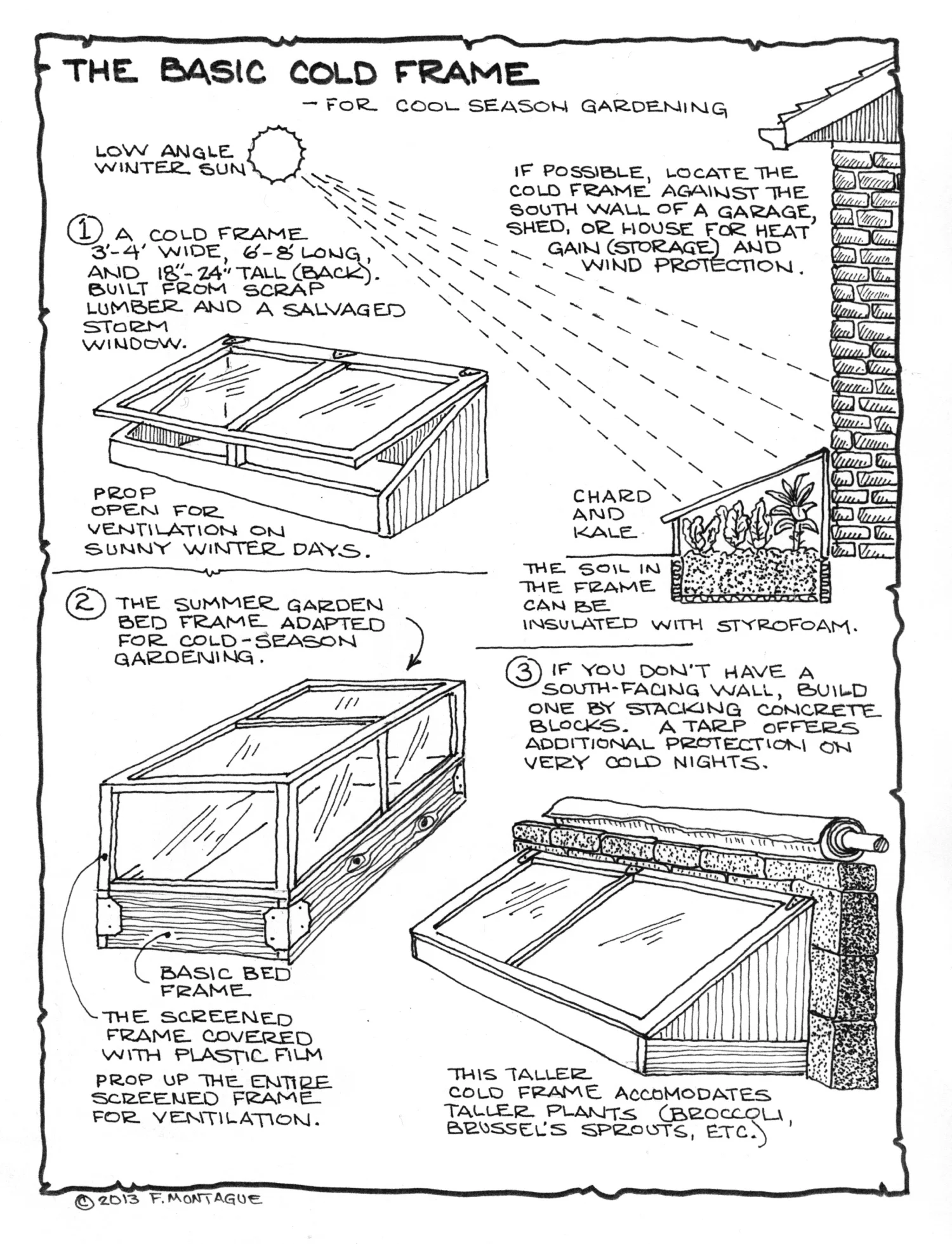If you are lucky enough to have a cold frame already built for your garden, you may be enjoying fresh, organic greens, kale, and broccoli this winter.
If not, now is the time to plan a location for a cold frame that you can build and plant next autumn. This project is simple, fun, and worthwhile.
Here’s what you can do now (in the dead of winter)
1. Survey your property. Identify areas where the sun shines most of the day. In North America’s mid-latitudes this will be on the south side of something—a wall, garage, shed, or house. If your yard is full of deciduous trees, there will be more sunny spots in the winter than in the summer. The most sunny spot may be on a driveway, patio, or walk. Since you can make a raised-bed cold frame, this may not be a problem.
2. Pay attention to these places during the rest of the winter. Are they snow-free when other areas have snow? Do they feel warmer than other places when you walk by? Do you sense heat radiating from the wall of the garage? Is the ground frost-free in the morning when frost occurs only a few feet away? These simple observations can help you identify naturally warmer places. Keep in mind that you will be adding some sort of low-cost (or no-cost) structure that admits sunlight and traps some of its transformed heat energy. The point is that the whole enterprise works best if you place the cold frame where the free energy source can be amplified by adjacent structures. Remember, you could always build a wall where none currently exists. Use straw bales or stacked concrete blocks.
Other than keeping your eyes open for materials that you can re-cycle, or scavenge, or beg, or re-purpose, all you have to do is pay attention to possible locations.
By doing these simple things now, in wintertime, you will have the best chance of building your cold frame in the best spot.
In the Fall 2013 issue of Edible Wasatch magazine, I wrote a short essay titled “Harvest After the Frost.” Here I outlined various aspects of siting, constructing, and planting a small, economical, homemade cold frame. The illustration from this essay appears below, and it may be helpful for you to visualize the project. The essay also appears as one of my 13 Edible Wasatch articles that I have subsequently collected into a hand-bound artist’s book titled Garden Notes: Thoughts on Gardening, Ecology and Sustainability.
Have fun!

